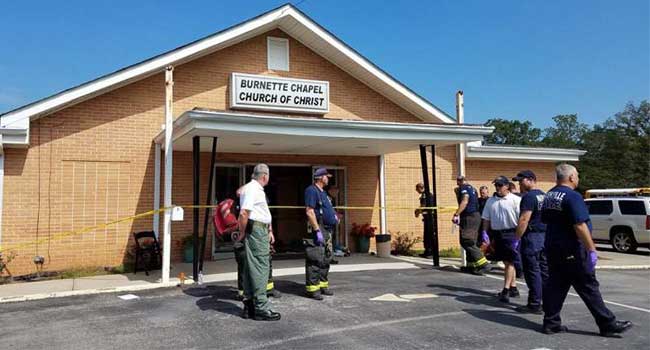
Nashville Church Shooting Kills 1, Injures 6
A Tennessee man is being held without bond after he open fired in a church outside of Nashville killing one person and injuring six others.
A church just outside of Nashville, Tennessee has been shaken after a man entered the building and began shooting "indiscriminately" at people inside during a Sunday morning service.
Emanuel Kidega Samson, 25, was identified as the suspect by police. Authorities told the media that Samson had arrived at the church before 11 a.m. and "fired upon the church building."
Police found four guns believe to be Samson's. A statement by police revealed that a rifle and pistol were found in Samon's SUV while two other pistols were found in Burnett Chapel Church of Christ in Antioch where Samson killed 39-year-old Melanie Smith as she walked to her car.
After killing Smith, Nashville police said that the gunman entered the main sanctuary door and "began indiscriminately shooting." Six other church members were injured before 22-year-old Caleb Engle, a church usher, intervened. Police say there was a significant struggle between the Samson and Engle, but eventually Samson shot himself in the left pectoral muscle as a result of the struggle. Engle told police he left to get his firearm from his vehicle and then came back to keep an eye on Samson before the police arrived.
In a statement made to police, Engle said, "the real heroes are the first responders, medical staff and doctors who have helped me and everyone affected."
Those wounded were all over the age of 60: William Jenkins, Marlene Jenkins, Linda Bush, Katherine Dickerson, John Spann and Peggy Spann.
The Memphis office of the FBI and the U.S. attorney's office for middle Tennessee have opened a civil rights investigation into the crime, but have declined to comment further.
Samson is believed to have come to the United States from Sudan in 1996 and was a legal US resident but not necessarily a citizen. It is not known if Samson knew the congregation at Burnette Chapel.